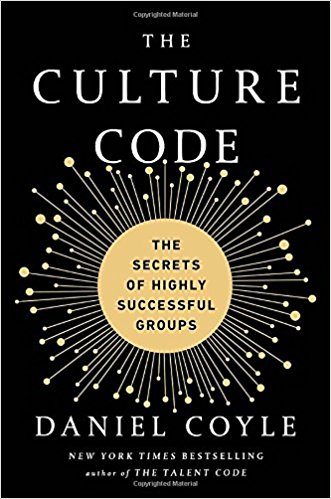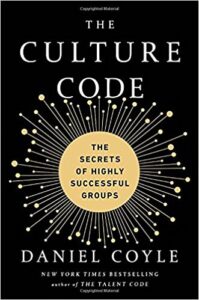
Coyle on Culture: An Interview with Best-Selling Author Daniel Coyle
Back in March of 2016, I was visiting the Cleveland Indians Spring Training complex. While former Cressey Sports Performance pitching coordinator (and current Indians assistant director of player development) Matt Blake was giving me the tour of the complex, he asked me if I knew Dan Coyle.
“The Talent Code author? I love that book.”
“Yeah, he’s spending some time observing our culture as he prepares for his new book. Great guy; want to meet him?”
For the next half hour, I chatted with Dan – and realized that in addition to being a great guy (as promised!), he also had some tremendously insightful perspectives on building a great culture in business, sports, and beyond. When the book finally came out in January, I was fortunate to get an advanced copy – and absolutely loved it. And, it made me consider a lot of ways that we could work to positively impact our culture at Cressey Sports Performance. To that end, I asked Dan if he’d be willing to answer a few questions for the blog so that my readers can get a taste of what The Culture Code brings to the table.
EC: Let’s start with origins of this book. What drove your interest in exploring culture further?
It all started with a tennis ball. A few years back, I was visiting Spartak, a small Russian tennis club that has produced more top women players than the entire United States. I was focused on learning how they developed individual talent (the research later turned into The Talent Code), but while I was there I witnessed a remarkable moment. Partway through a busy day, the door squeaks open and a new player, a girl of about ten, shows up. It’s her first day. The head coach, an imposing woman named Larisa, is working with other players, but she spots the new girl immediately. The girl is clearly nervous she’s setting foot on the hallowed ground of Spartak for the first time. Larisa walks over carrying a tennis ball. Larisa says, “I’m glad you’re here.” Then Larisa says, “Can you do something for me?” The girl nods. Larisa tosses her a tennis ball and the girl catches it, and Larisa smiles. The whole interaction took ten seconds. But in those ten seconds, the girl went from nervous outsider to belonging to the group. That’s when I started to wonder: what’s that made of? How do groups create that sense of connection that drives their success? So you could say that tennis ball sent me on a journey around the globe.
EC: After only a few pages of reading, I was already surprised at some of the conclusions you had drawn on how culture impacts organizational success. What were your biggest surprises as you explored these concepts in preparing the book?
I’d say the power of vulnerability was the biggest surprise. Like a lot of us, I’d grown up always associating leadership with confidence and expertise. So when I saw that leaders of the very best organizations — I’m talking SEALS Team Six, Zappos, San Antonio Spurs, Pixar — were incredibly open about their weaknesses, I was shocked. As one leader told me “The most important words a leader can say are, ‘I screwed that up.'” But when you look deeper, it makes sense. Groups that hide their weaknesses are weak. Groups that share them are strong, and having leaders be open about weakness is the best way to do that, because it gives others permission to tell the truth. One of the SEALs commanders called it a “backbone of humility.” I like that, because humility isn’t weak — it’s actually the best way for a group to be strong together.
EC: I know you spent time with the Cleveland Indians, San Antonio Spurs, and other athletic organizations as you prepared the book. How is elite team sport similar to small and large businesses? And how is it different?
Great question. Traditionally, those elite teams have operated on a different plane than the rest of the business world. But I think we’re at a moment where the lines are converging. A lot of that has to do with the rise of data, but perhaps more has to do with the way both elite sports and elite businesses have realized that they are engaged in a learning contest. That is, how can they maximize their daily habits to produce the most growth (for players, for coaches, for managers, for everybody) in the shortest amount of time. This means they are operating from a growth mindset, using development systems, and embracing cross-domain learning like crazy. I think the one area where it remains different is in diversity. Elite sports is filled with very similar people — mostly male. That is starting to change, and the smart teams are leading the charge. That’s one area where I think we’ll see a lot of change in the coming years.
EC: Let’s say that the average business owner or coach reads this book and realizes that they have some serious work to do to improve their corporate or championship culture. What are the small hinges (initial change) that are going to swing the biggest doors? In other words, are there 2-3 recommendations that you think would yield the most profound changes for organizations in desperate need of improvement?
I’d suggest a few things to think about. First, think about your culture change the same way you would think about a fitness regimen — namely, that it’s a process, and it requires time, repetition, and commitment. Its success won’t depend on doing something once or twice, but rather on building strong organizational habits that drive improvement day by day.
Second, undertake a culture capture to figure out where you are. Culture captures can take a lot of forms: the most common is an in-depth survey (anonymous, preferably) that unearths the strengths, weaknesses, and tensions within a culture. Two questions you might ask would be:
1) What gets rewarded around here?
2) Tell me a story about something that happens in this group that doesn’t happen anywhere else.
This is also a good opportunity to help define your priorities: what comes first? What comes second? Third?
Third, encourage leaders to express vulnerability. For change to happen, leaders need to send a clear and powerful signals — and there’s no more powerful signal than a leader asking their group what they can do better. One way to do that is by sending a simple email: What do you want me to keep doing? What do you want me to stop doing?
Closing Thoughts
The Culture Code is one of the few self-development/business books that I think has universal application and is therefore a good read for just about anyone. Everyone – regardless of title – is part of multiple cultures in their daily lives and can derive strategies for optimizing them from this book. I’d highly recommend giving Dan’s book a read.




